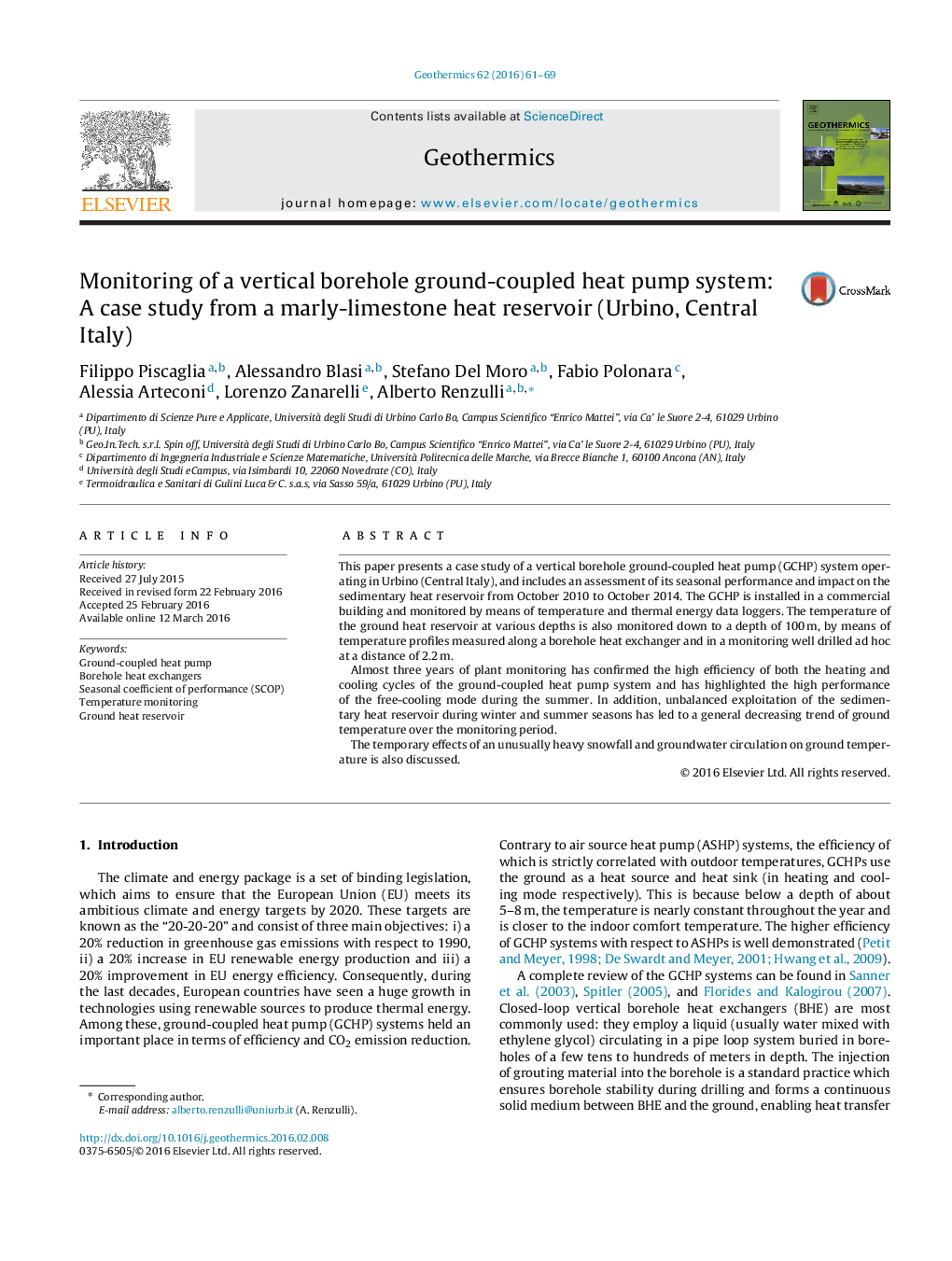| Article ID | Journal | Published Year | Pages | File Type |
|---|---|---|---|---|
| 1742157 | Geothermics | 2016 | 9 Pages |
•Seasonal COP of ground-coupled heat pump system installed in Central Italy.•Marly-limestone sedimentary heat reservoir monitored for four years.•Ground temperature profile from 10 to 100 m of depth.•Ground temperature decreasing trend demonstrating the effect of unbalanced thermal demand.•The temporary effects of extraordinary snowfall and groundwater circulation on ground temperature.
This paper presents a case study of a vertical borehole ground-coupled heat pump (GCHP) system operating in Urbino (Central Italy), and includes an assessment of its seasonal performance and impact on the sedimentary heat reservoir from October 2010 to October 2014. The GCHP is installed in a commercial building and monitored by means of temperature and thermal energy data loggers. The temperature of the ground heat reservoir at various depths is also monitored down to a depth of 100 m, by means of temperature profiles measured along a borehole heat exchanger and in a monitoring well drilled ad hoc at a distance of 2.2 m.Almost three years of plant monitoring has confirmed the high efficiency of both the heating and cooling cycles of the ground-coupled heat pump system and has highlighted the high performance of the free-cooling mode during the summer. In addition, unbalanced exploitation of the sedimentary heat reservoir during winter and summer seasons has led to a general decreasing trend of ground temperature over the monitoring period.The temporary effects of an unusually heavy snowfall and groundwater circulation on ground temperature is also discussed.
